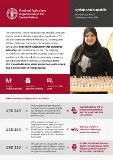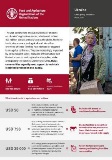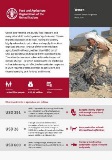

FAO in the 2024 Humanitarian Response Plans
12/2023
By the end of 2022, the Global Report on Food Crises recorded the highest-ever levels of acute food insecurity – affecting a quarter of a billion people in 53 countries – in spite of the highest ever levels of funding for humanitarian response.
Throughout 2023, needs remained unacceptably and stubbornly high: 258 million people in 53 countries were acutely food insecure. Concurrently, humanitarian budgets began tightening, leaving millions without assistance.
Food crises continue to dominate the global outlook for 2024. Extreme weather events driven by the climate crisis are interacting with new and intensifying conflicts and economic instability, pushing humanitarian needs higher.
The reality of high needs and likely further contraction of bilateral donor funding means that the 2024 humanitarian response planning process must further sharpen its focus on those most at risk and the most cost-effective ways to meet their immediate food security needs.
In 2024, within the Humanitarian Response Plans, FAO is seeking a total of USD 1.8 billion to assist 43 million people to produce their own food. At a time of funding cuts, this support is both life-saving and cost-effective – on average for every USD 50 a donor provides, rural families are producing USD 300 in food.

Syrian Arab Republic: Humanitarian Needs and Response Plan 2024
03/2024
Thirteen years of conflict and an enduring economic crisis in the Syrian Arab Republic continue to drive humanitarian needs, disrupt agriculture and weaken the country’s food production capacity.

The Sudan: Humanitarian Needs and Response Plan 2024
03/2024
With conflict raging since April 2023, the Sudan has rapidly become the world’s largest internal displacement crisis.

Ukraine: Emergency Response Plan 2024
07/2024
The war in Ukraine continues to escalate with major impacts on Ukraine’s agriculture sector, which used to feed 400 million people annually across the globe.

Yemen: Humanitarian Response Plan 2024
06/2024
One in two Yemenis are acutely food insecure, and every other child under 5 years of age is stunted.
